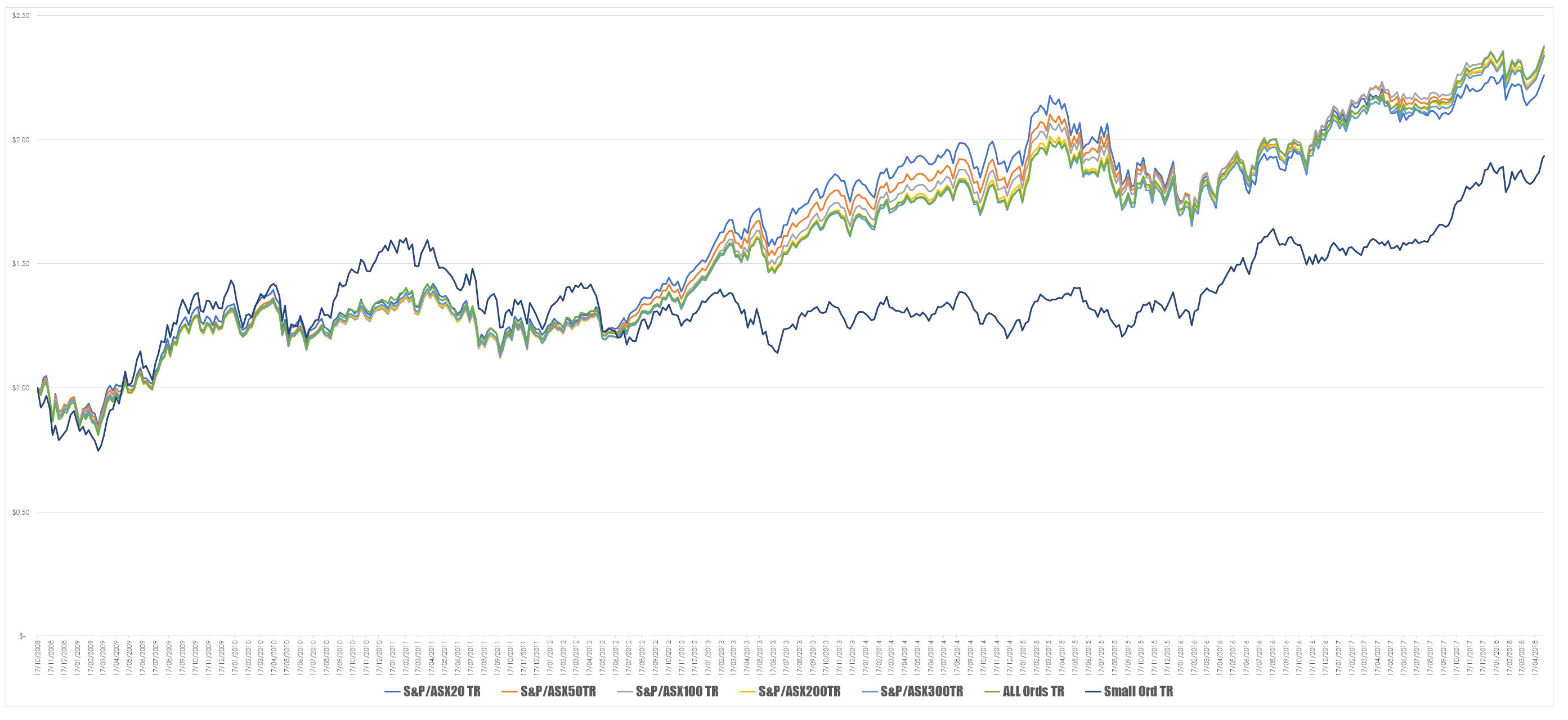I have been playing around with the comparative returns from various local indices – this is what happens in Melbourne when the weather turns to shit and I get bored. It has long been known or at least should be that market selection is a cornerstone of effective trading. One of the reasons why domestic fund managers are so poor at investing is that they are either in the wrong market or even worse in the wrong market constantly. But that is a different rant. There is often an assumption that because the local S&P derived major indices all share a high correlation that their performance shares the same correlation. However, when we look at the performance of an index we are looking at a different aspect of correlation – we are also imply a somewhat more hard nosed approach in that we are only interested in the true return of an investment in that index. From this you can see that there is a subtly in the returns that is not picked up by simply assuming that because the constituents overlap and the chart looks the same that they are the same.
The chart below looks at the value of $1 invested into the major domestic indices as well as the Small Ords for comparison. You can click on the chart for a huge version.
There are two things that are obvious to me.
- The performance persistence of the Small Ords post the GFC – my guess is that this is a reflection of the persistence of the mining boom. Early 2012 this situation changed as blue chips began to recover and the mining boom ended in a bust. The level of under performance by the Small Ords since then has been marked. Until there is some movement in commodity prices this situation is unlikely to change. It does however highlight both the shallowness of the local market and the dichotomy between banking/finance and mining.
- Post the GFC recovery in lue chips naturally drove the S&P/ASX20 in front of the other indices. Over time you can see confidence seep into the broader market as the All Ords has moved ahead.
The implications of this sort of chart for traders is probably in both market selection during times of change and as an extension of that the selection of the correct ETF in the ever expanding world of ETFs






